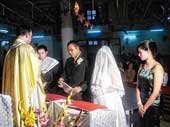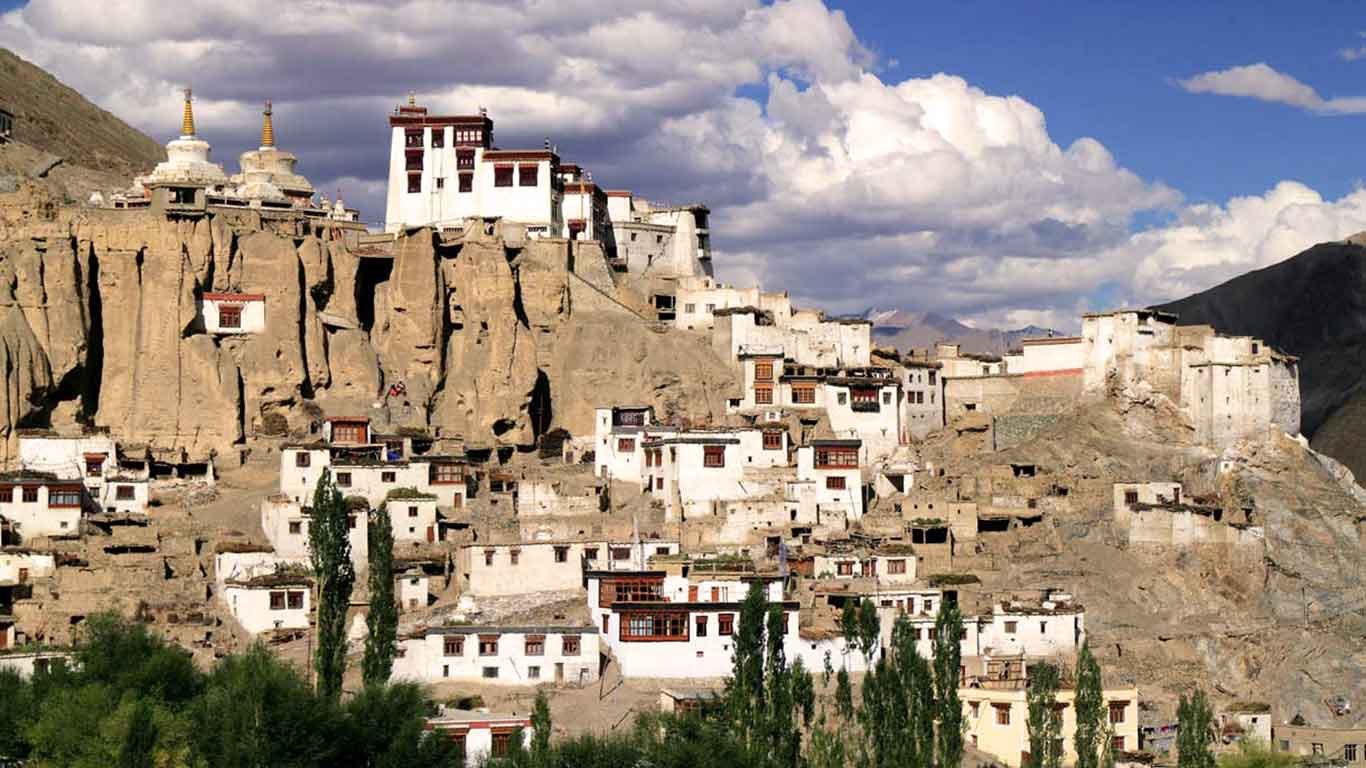Courtesy: The Telegraph, Kolkata.
Foxtrot and grape wine, Housie and Jhalfrezi, Engelbert and gobstopper — those were the days for the Anglo-Indians.




“The Anglo-Indian Absconder Soldier Daddy” penned by Norman Ivan Marshall and released last week brought back memories of the Anglo-Indians of the 1960 and ’70s in Calcutta.
Metro revisits some Anglo-Indian ways of life — some of them mere memories, a few still soldiering along.
The dress: Till the 1970s, it was only western wear for the women — dresses, skirts and pant-suits. “In the 1920s and ’30s, we wore dresses — organza and taffeta — and fluffy skirts that came to the knees or below. Sleeves were always full, and we did elaborate hair-dos, with ringlets and little ribbons,” recalls Joan Fleming, 81, at her Elliot Road home.
Now Anglo-Indian women generally adopt the attire of the region they live in. “At a New Year Eve party, you can still see many ladies dressed in gowns,” says Barry O’Brien, who represents the community in the Bengal Assembly. The men are mostly in westerns, the more formal, the better.
The party: The laid-back Anglo-Indian loved his peg and his party. And since a large percentage of the railway employees were Anglo-Indians (the men even had job reservations in the railways), Railway Institute gatherings would often turn into Anglo-Indian dos.
They would dance the waltz, the jive and the foxtrot. “Anglo-Indians danced well and took pride in their twinkle toes. The music was completely English…. That is losing out to the freestyle, Bollywood-inspired moves today,” rues Ian Myers, the principal of Frank Anthony Public School.
Boxing Day: Boxing was a favourite sport and the day after Christmas, Boxing Day, (boxes at churches and homes would be removed and the collections given to the poor) became a day of boxing. Literally.
Boxing matches were organised at the institutes and challengers would troop in to take on the champion. Others would gather to cheer.
Hockey, football, basketball and athletics were also very Anglo-Indian games. Not any more. “Perhaps because our children are so busy with academics,” Myers reasons.
The other Boxing Day favourite was a trip to the zoo, armed with “boxes” of leftover goodies from Christmas.
Yellow rice and ball curry: A must at Sunday lunch. “It is still popular but it’s not confined to Sundays. The “bhaat-dal-bharta” is also very Anglo-Indian. Only it’s called rice-doll-mashed potato and had with fried kofta,” laughs Brian Sweeney, in his 60s.
Then there is Jhalfrezi, Pork Vindaloo (a Goan-Portuguese dish that Anglo-Indians made their own) and Pepper Water (a kind of sambar with lots of black pepper). And Salt Meat (huge chunk of meat salted and kept for days and weeks; holes gouged in it and slices of lime put in).
The Anglo-Indian loves his breakfast. In central Calcutta, it would often consist of dal puris or halwa puris or barkakhanis (puris made with beef flour). Today it is often crumb chops, cutlets or pantras (mince in a flour pancake). A sweet at the end is still a must; a Bengali sweet will do if there’s no caramel custard!
Table manners: “I was once ticked off for bending down to retrieve a napkin. You were supposed to ring for a fresh one. There was no getting the cutlery wrong, you couldn’t talk at the table and you had to wait for everyone to finish each course before moving on,” says Fleming. Now, one member of a family may eat with his fingers, while others might prefer the spoon and fork, points out O’Brien.
Christmas cake: Always, always baked at home. And everyone pitched in — some beat the eggs, some mixed the batter, some shelled the nuts. “An Anglo-Indian family buying its Christmas cake was unheard of till ’70s,” says Myers. The tradition continues among some.
Wine: Grape wines were also made at home. Rose-a-cookies and kul-kuls were two other Christmas favourites made at home. The tradition is dying.
Music at home: Walking down the Ripon Street-Elliot Road area, one couldn’t miss the loud English music wafting out of Anglo-Indian houses as the women went about their chores. It would be Engelbert Humperdinck, Jim Reeves, Tom Jones or Elvis Presley.
“On weekends, 60 to 70 per cent of the requests for Musical Band Box and Lunchtime Variety would be from Anglo-Indians,” says O’Brien.
New Market: Shopping meant New Market. You would meet all the “upcountry” people there, picking up barley-sugar, gobstoppers (round sweets so big they would shut you up), Bandel cheese (so dry that it needed to be soaked overnight before use), Guava Cheese, Guava jelly (sold in cigarette tins). Now, a pre-Christmas visit to New Market remains a must do.
Rolls: O’Brien demands credit to the Anglo-Indians for making rolls popular. “Nizam’s was the place to go for rolls, only they pronounced it ‘Ny-Zam’s’. And rolls were called Kati-rolls or simply Katis (mainly beef).
Housie: Whist and Housie (now called Scratch, but never Tambola by an Anglo-Indian) remains a big draw. Numbers were never just called out, it was “Kiss me and run — Number One” or “What babies do — Number Two”.
House parties: Join in for Rs 5! “One of the mothers would make sandwiches and soup. There would be soft drinks and music and we would dance,” remembers Sweeney.
Kissing: As a form of greeting. All young people were made to kiss the older ones — aunts and uncles and everyone in the community. “I still kiss my mother and even my father when I meet them,” says O’Brien.
Last word: “The Anglo-Indian community is perhaps not as laid-back and easy-going as it used to be. That’s maybe because life has become more competitive. When we get the time to relax, we still let our hair down. But it is not as often as it used to be,” says O’Brien.
In what other ways has the community changed? Tell ttmetro@abpmail.com
Gob Glossary
The Mrs: Instead of ‘Your wife’ (used sometimes)
Sir, Ma’am: For addressing parents (not in use)
Atsees: Eight annas, or 50 paise. Likewise, dosees, charsees (not in use)
Upcountry: People in railway colonies like Kharagpur or Chakradharpur (rarely used)
Chutney Mary: A woman dressed gaudily to look elite (not used)
Molly with the Dolly: Comes from ‘mali with the dali’, the dali being a Christmas hamper the mali would carry in (not in use)
Sunday is longer than Monday: The edge of the petticoat showing from under the dress or skirt (not in use)
Wallflower: A girl without a partner at a dance (rarely used)
Chhukka: A pansy man (in use)
Papa, Nana: Grandfather, grand mother (in use)
‘Girl’, ‘boy’ after a name: An affectionate way of addressing the young, like Buddi girl or Budda boy. Also Son-a-boy (not in use)
Bra: Short for brother, like the modern ‘bro’ (in use)
Bum-freezer: A coat that ends at the hips (rarely used)
Missibaba: The domestic staff would address the young daughter of the house thus (not in use)
Babalog: Used by the staff to refer to the boys (rarely used)
Chhota Hazri: A light early-morning snack (rarely used)
Dekchi: A large utensil. Even Anglo-Indians who migrated to Canada or Australia in the ’40s call a dekchi a dekchi. Also Hawaii chappals for bathroom slippers (in use)
Chokra boy: A small, dirty fellow (in use)
Gunda: Affectionate term for a naughty fellow (in use)
Pataka: Attractive woman, but someone not quite simple (in use)
Mama-ko-pucho: Mama’s boy (not used)
Ting-tong wala: Door-to-door vendor (not used)
Suit-Boot-and-Gramophone: Suddenly very dressed up (not used)
On tick: To buy on credit (not used)
Phutani: Putting on airs (in use)
Going to the guava gardens or turning your toes up to the daisies: To die (rarely used).
Toe Jam: Smelly toes (in use)
BO: Body odour(in use)
Gob gas: Bad breath (in use)
Bending the elbow: Having a drink (in use)
Run-away Jack: Indian-style toilet (used sometimes)
Can you add to the list? Tell ttmetro@abpmail.com
Compiled by Poulomi Banerjee





